German Panzerschreck: Allied Tanks’ Bane
April 25th, 2023
7 minute read
The German Panzerschreck, a powerful anti-tank rocket launcher, struck fear into Allied tank forces during World War II. In this article, Will Dabbs, MD explores its origins, design, and tactical impact on the development of anti-tank weaponry. It was a formidable weapon that played a crucial role in the intense battles of WWII and left a lasting mark on the landscape of modern warfare.
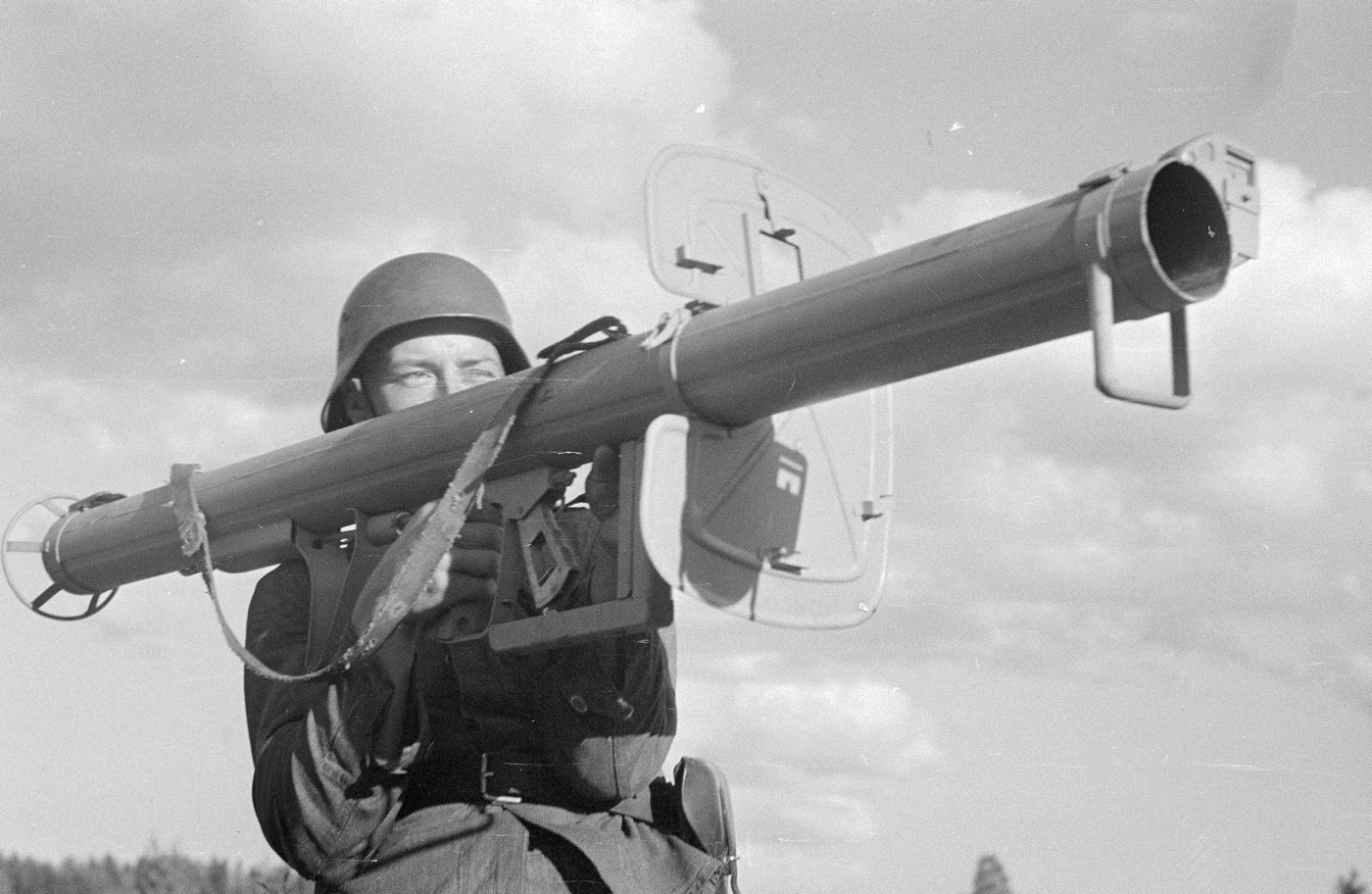
Through the lens of history, we rightfully respect the Germans for their engineering prowess during World War II. Though their worldview was utterly repugnant, the weapons they fielded went on to influence combat all the way to the modern day. We owe the assault rifle, the attack submarine, the ballistic missile, and the modern heavy battle tank to German wartime engineers. However, the Nazis were not beyond copying other nation’s kit when it suited them.
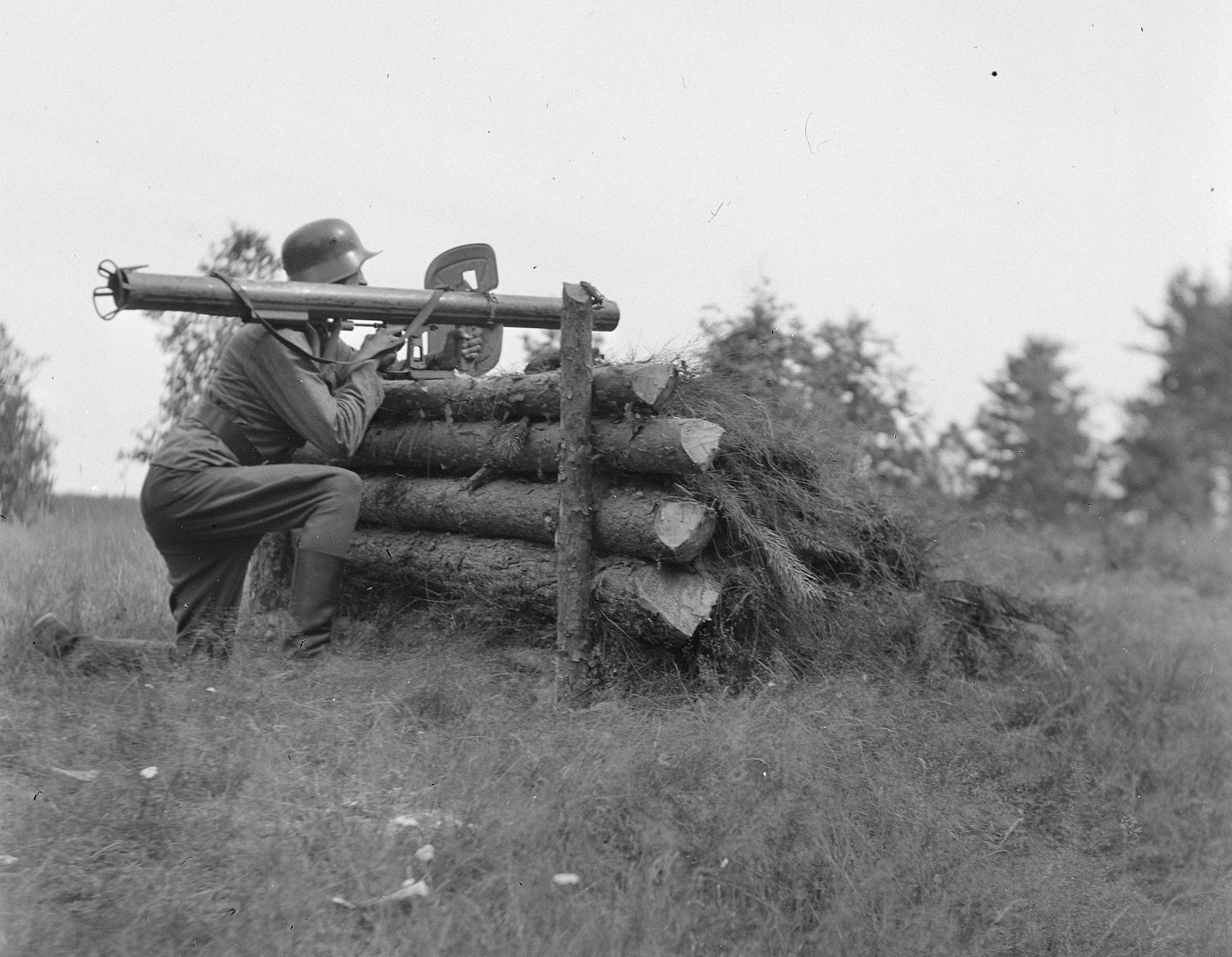
In 1942, U.S. forces received their rude awakening to modern combat in Tunisia. During the interwar years, the U.S. military was allowed to atrophy badly. World War I was a horrible experience for all involved, and no sane person was interested in doing that again. However, with the benefit of hindsight, Adolf Hitler was not necessarily in his right mind.
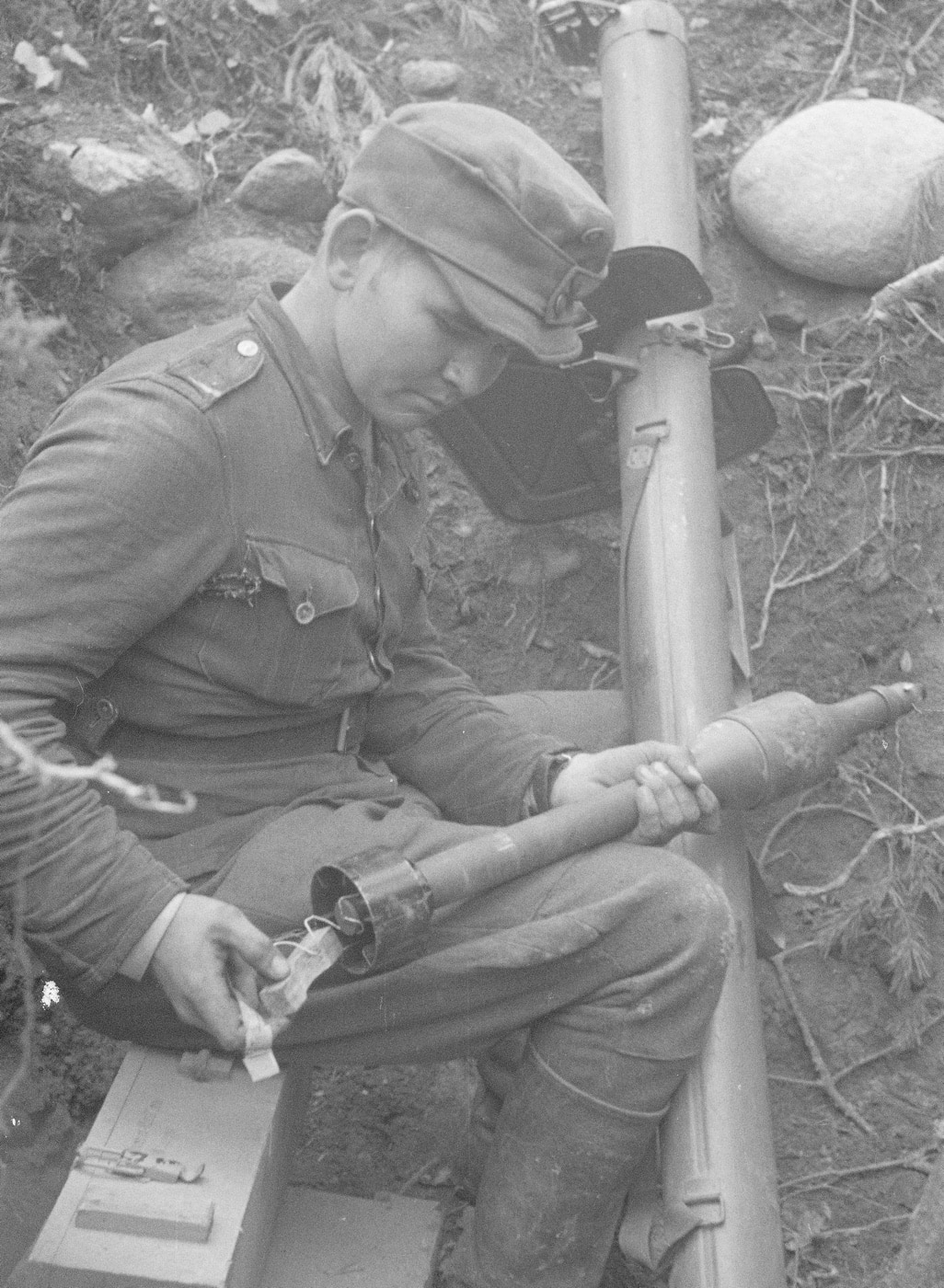
Once the U.S. was dragged bodily into the war, we had a steep learning curve. Before any serious efforts could be made to invade the European mainland, U.S. forces had to divine the fine art of amphibious assault. This bloody schoolyard was destined to be North Africa.
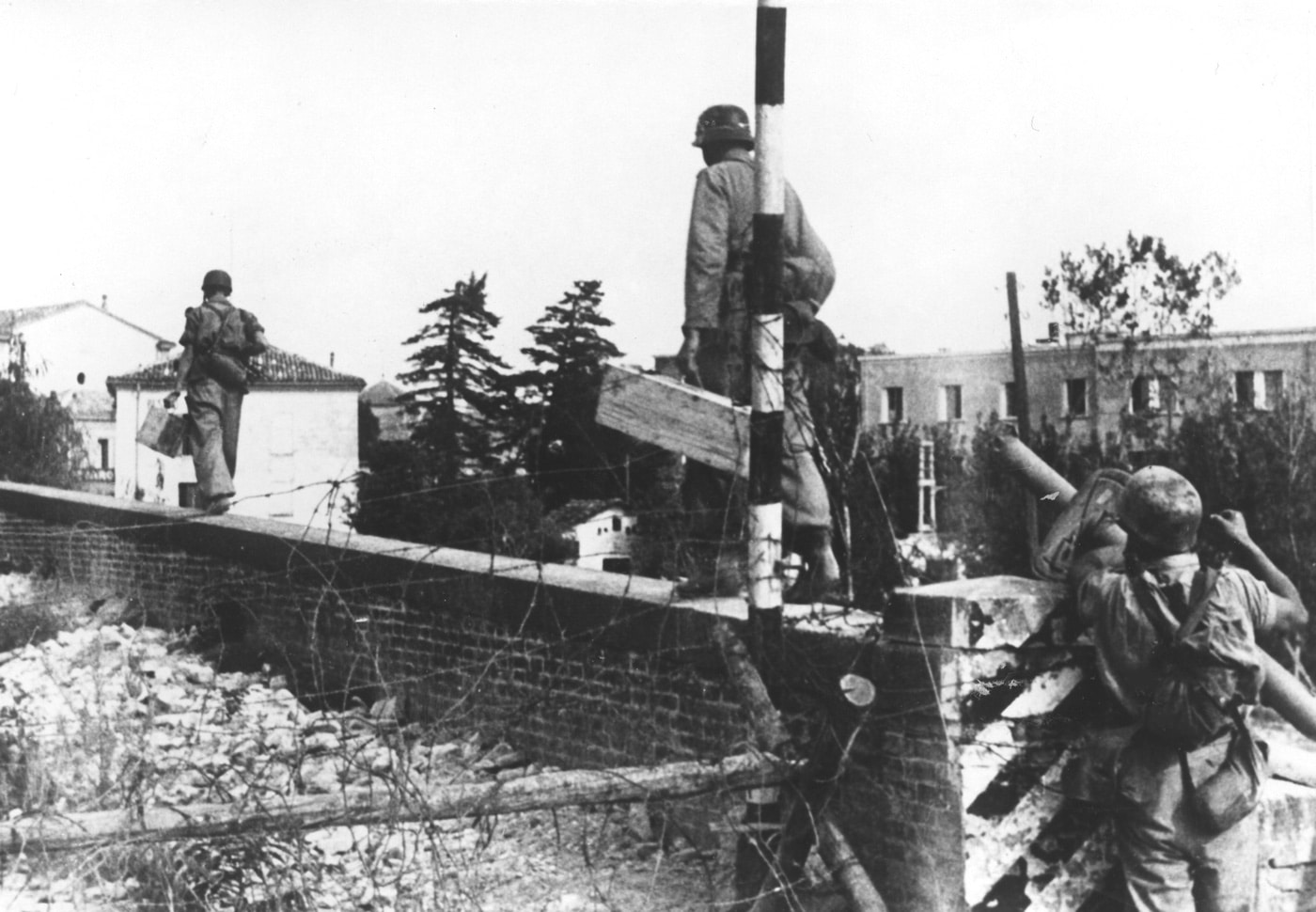
Our opponents were the battle-hardened formations of Erwin Rommel’s Afrika Korps. On 8 November 1942, U.S. forces, alongside those of Great Britain and the Free French, hit the beaches as part of Operation Torch. Strategic objectives included Casablanca, Oran, and Algiers. Interestingly, as Allied forces would also be facing the Vichy French, the British tried to minimize their footprint so as not to inflame anti-English sentiment unduly. For this reason, some British forces actually wore American uniforms. The Spitfires of the Fleet Air Arm were also painted with American roundels. Regardless, once on the ground, things did not go smoothly. The subsequent battle at Kasserine Pass was particularly horrible.
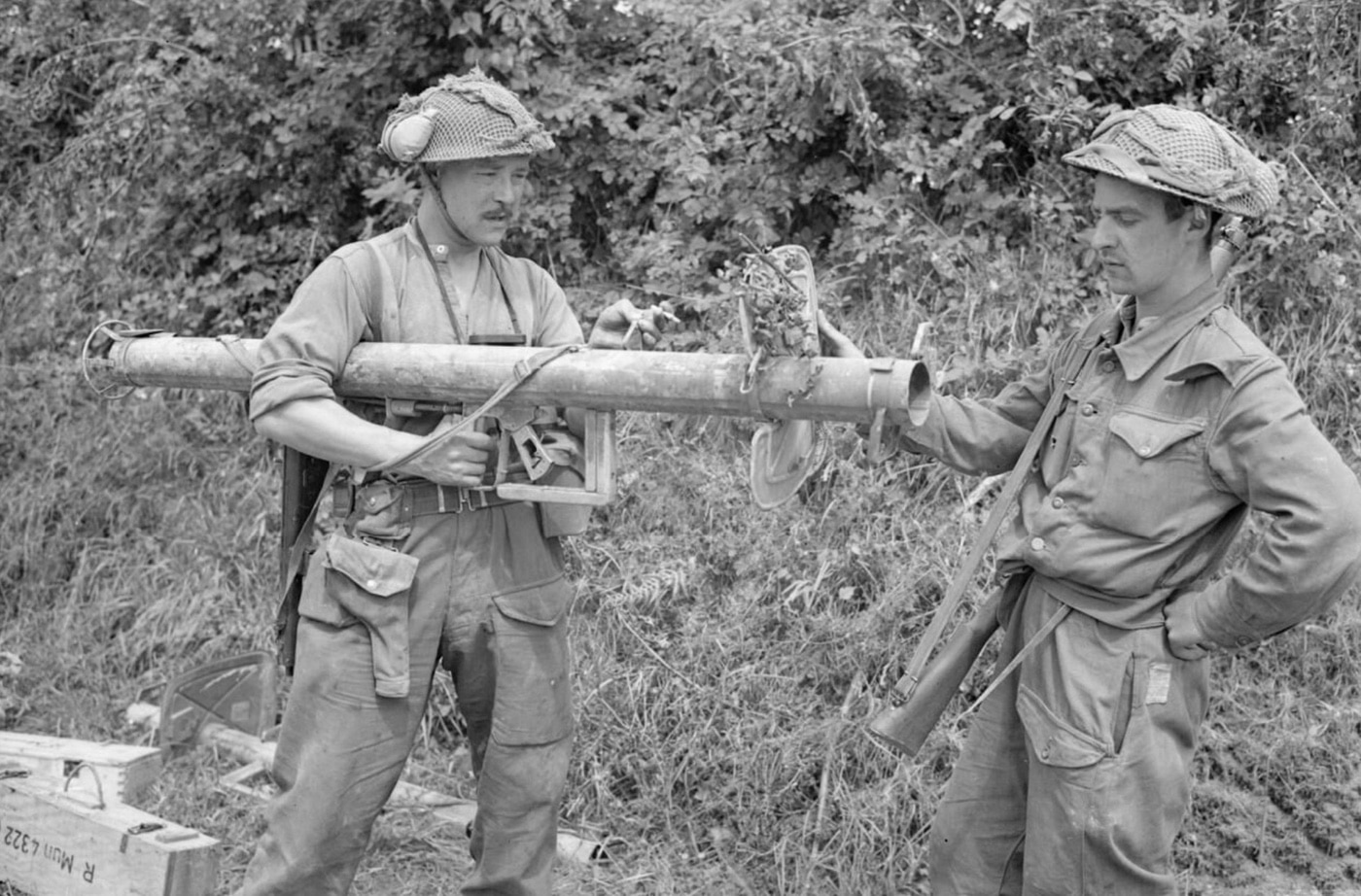
While the Allies ultimately won the day, Axis forces captured large amounts of American equipment along the way. This was Germany’s first taste of such stuff as the Sherman tank and the semi-automatic M1 rifle. Also among the captured booty was the American 2.36” bazooka.
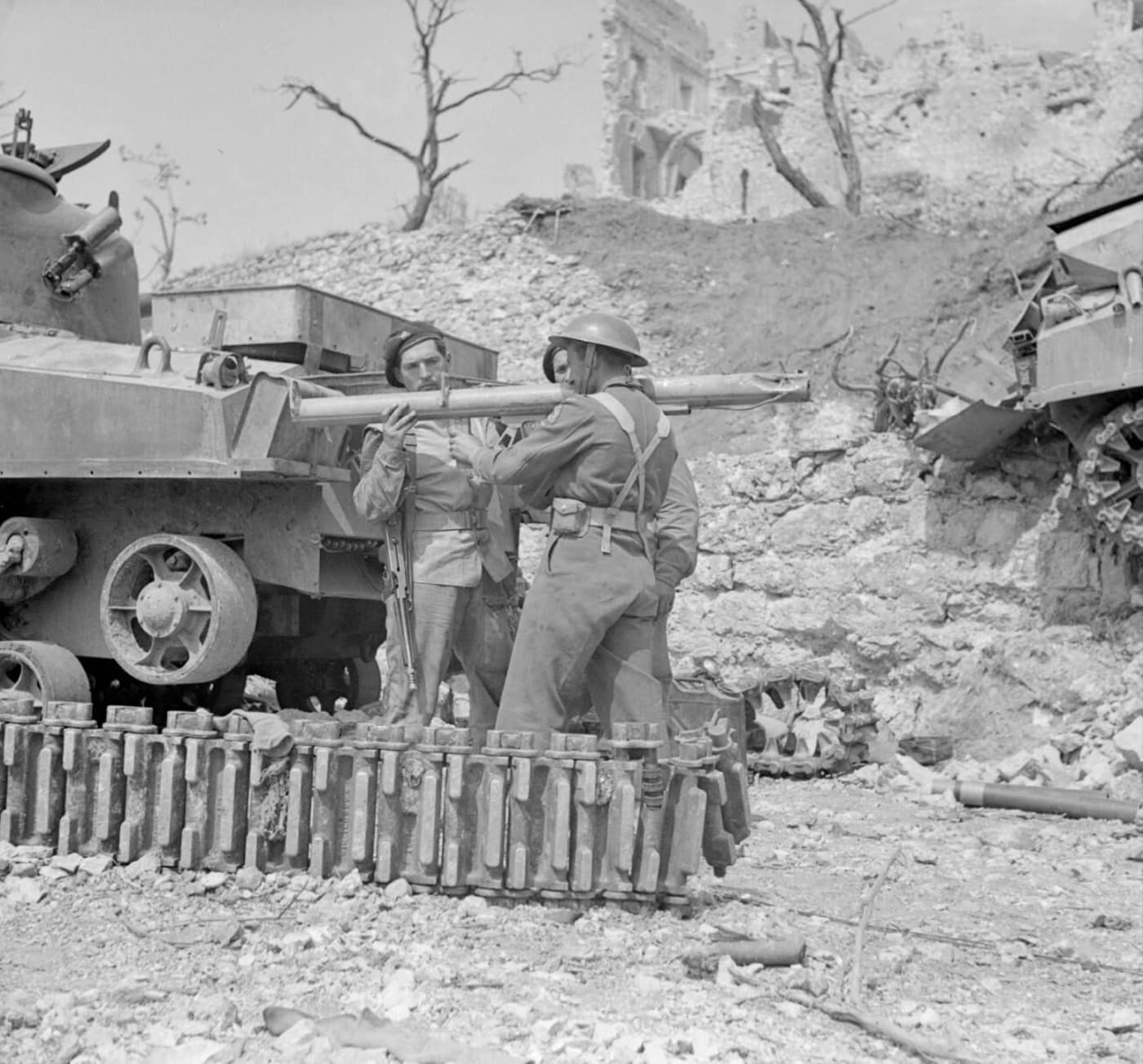
The M9A1 bazooka was a man-portable anti-tank weapon that was the brainchild of the pioneering American rocket scientist Robert Goddard. For its era, the 14-lb. rocket launcher was revolutionary. Once German engineers pawed over their captured examples, they knew that the Wehrmacht had to have them as well.
The Panzerschreck
The German Raketenpanzerbüchse 54 or “Rocket Anti-armor Rifle Model 54” was abbreviated to RPzB 54. German troops called it the Panzerschreck. This literally translates to “tank scream,” “tank fright,” or “tank’s bane.” The RPzB 54 was essentially a copy of the American bazooka tweaked in places and scaled up to better penetrate Allied armor.
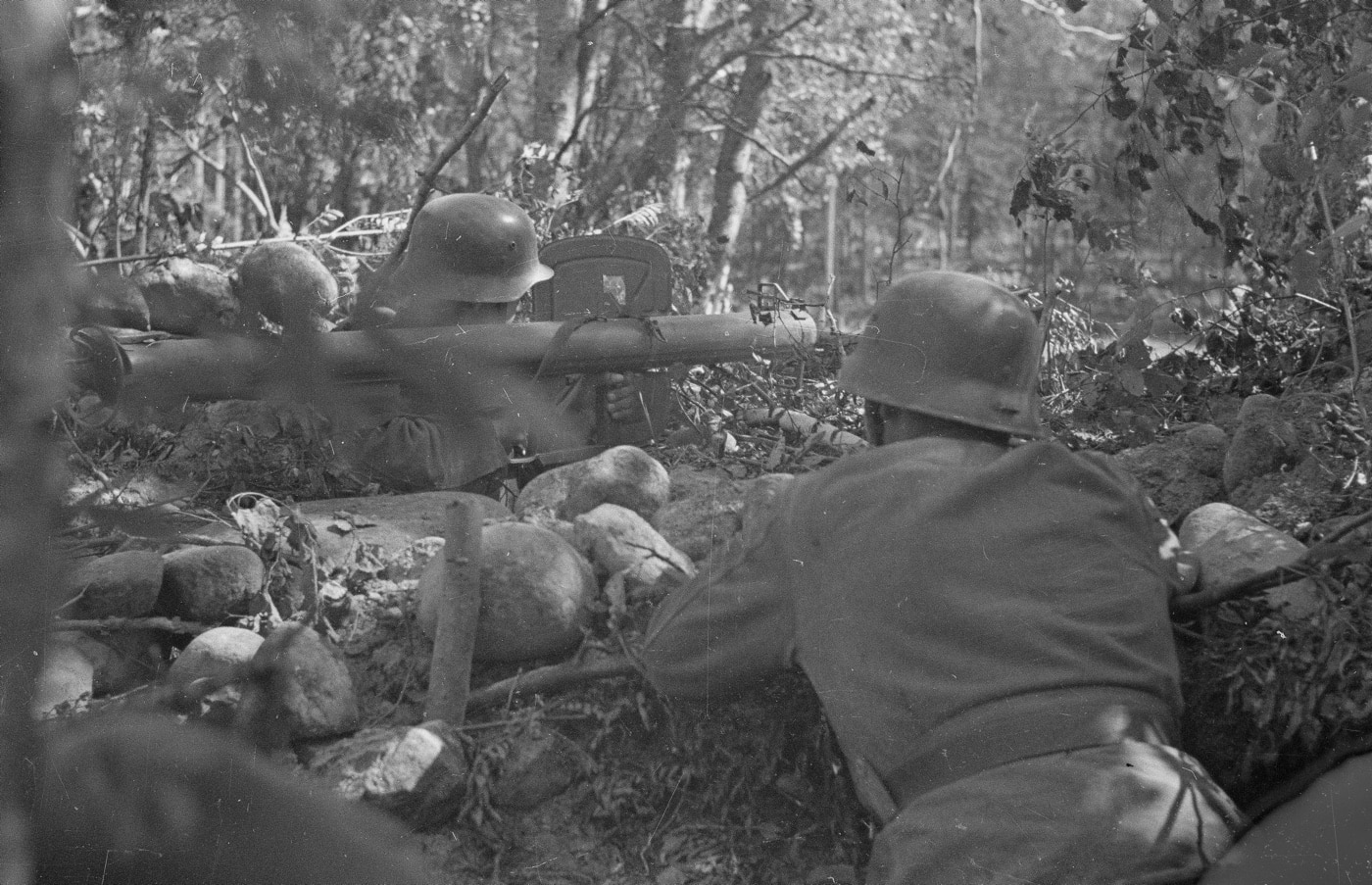
The 88m warhead used by the RPzB 54 was adapted from that of the 8.8 cm Raketenwerfer 43. This was a trailerable crew-served anti-tank rocket launcher that saw service from 1943 until the war’s end. This percussion-fired launcher was mounted on a two-wheeled gun carriage and was fairly cumbersome as a result. By contrast, the RPzB 54 was designed to be easily man-portable.
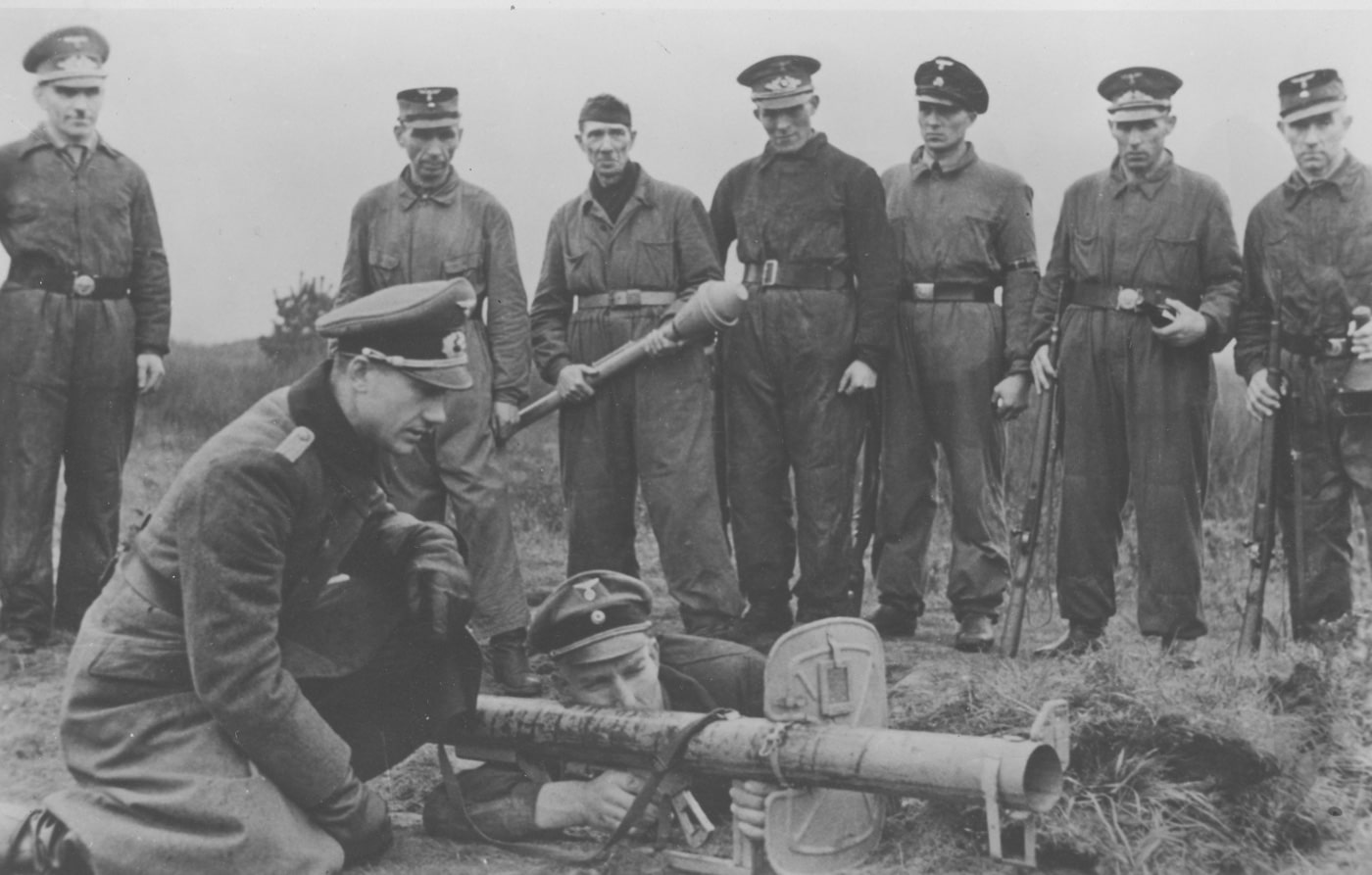
The round fired by the RPzB 54 retained the warhead of the Raketenwerfer 43 but was fitted with a longer rocket motor. Where the Raketenwerfer 43 was percussion fired, the Panzerschreck was fired electrically. Early launchers carried the designation RPzB 43. They were 5.5 feet long and weighed about 20 pounds empty.
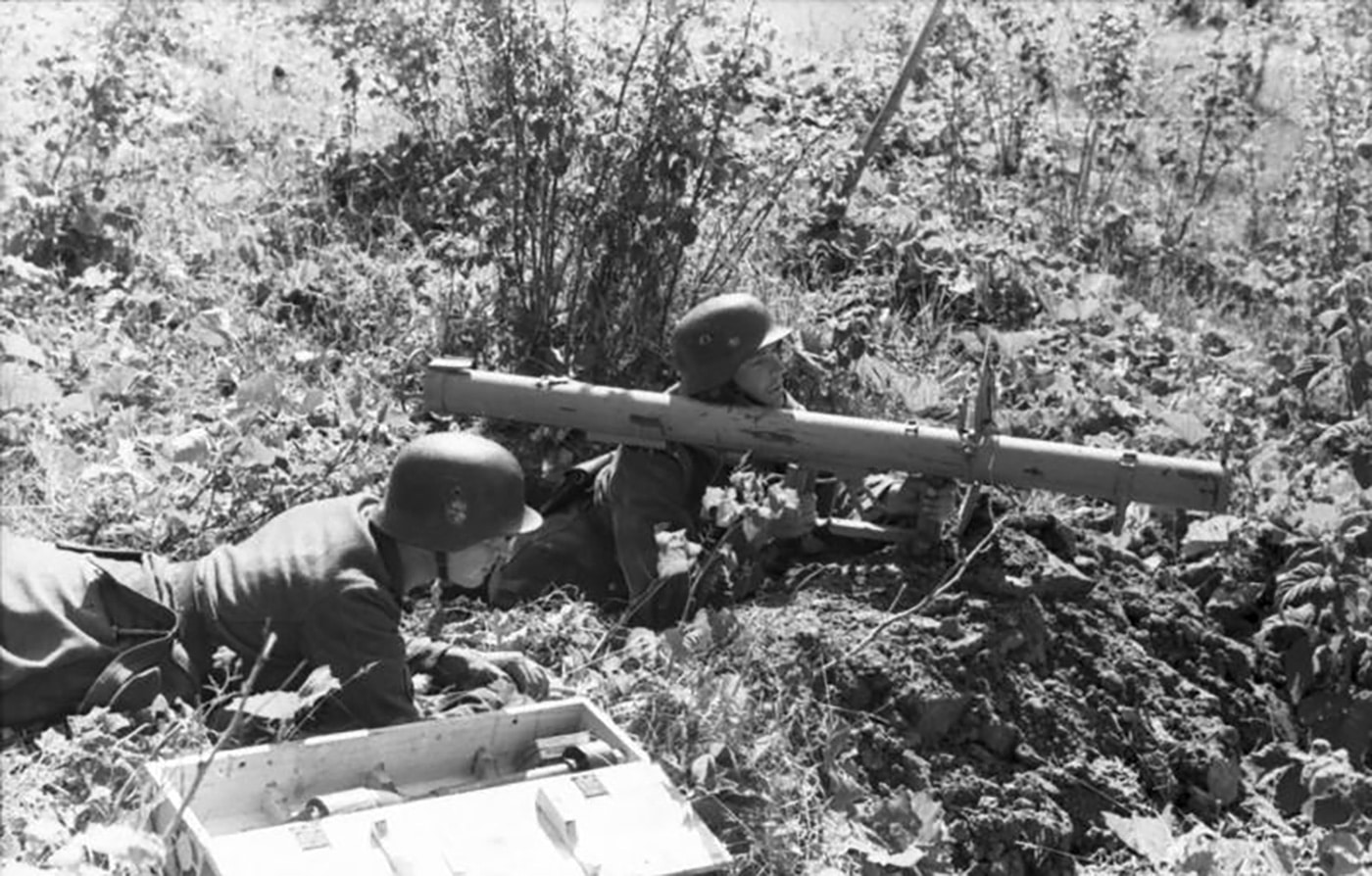
The RPzB 54 differed from the bazooka in a couple of critical aspects. The bazooka rocket’s propellant was entirely consumed within the launch tube, so protective clothing was not required to fire it. By contrast, the rocket fired by the Panzerschreck continued burning for about two meters past the muzzle. German operators were therefore instructed to wear gloves, a poncho, and a gas mask with the filter removed when firing the weapon. As you might imagine, this got a bit cumbersome in combat.
The workaround was to add a sheet steel guard to the launcher that would shield the firer from the hot gases produced by the rocket. The original version without the guard was titled the RPzB 43. The variant with the shield was the definitive RPzB 54. The blast shield was pressed out of thin gauge steel and provided little if any protection against incoming fire. However, it did negate the need for all that cumbersome protective clothing. The weight of the final version was about 24 lbs. unloaded.
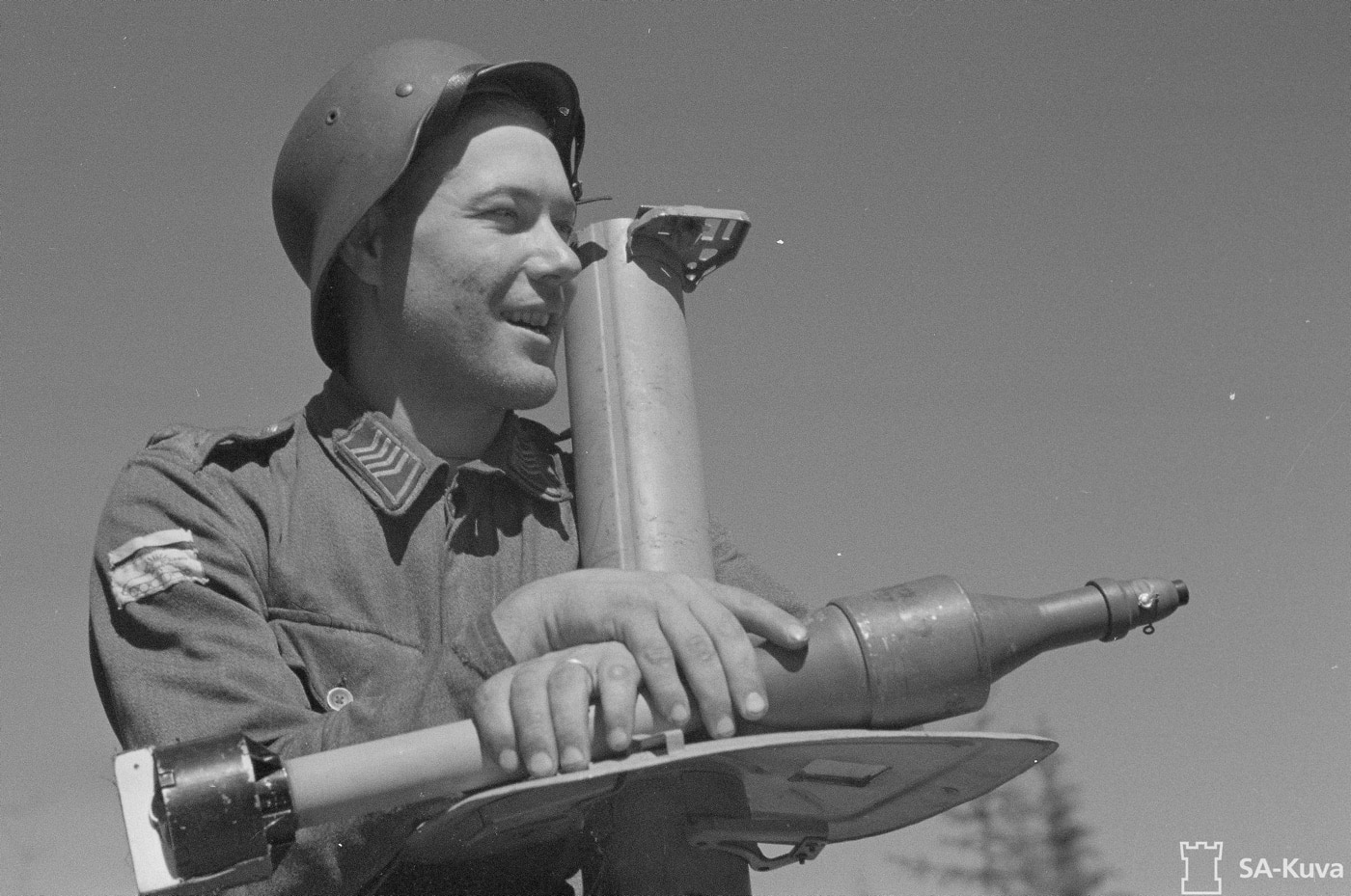
The Panzerschreck rocket traveled at around 110 meters per second. The maximum effective range was 150-180 meters. Because of the larger diameter warhead, the RPzB 54 did offer greater armor penetration capability than the American M9A1. Sights were simple pressed steel units affixed to the launching tube fore and aft.
Tactics
As the war progressed, the Wehrmacht found itself solely on the defensive. With Allied forces closing in from both the east and west, their very national survival hung in the balance. Such dire circumstances drove remarkable innovation on the battlefield.
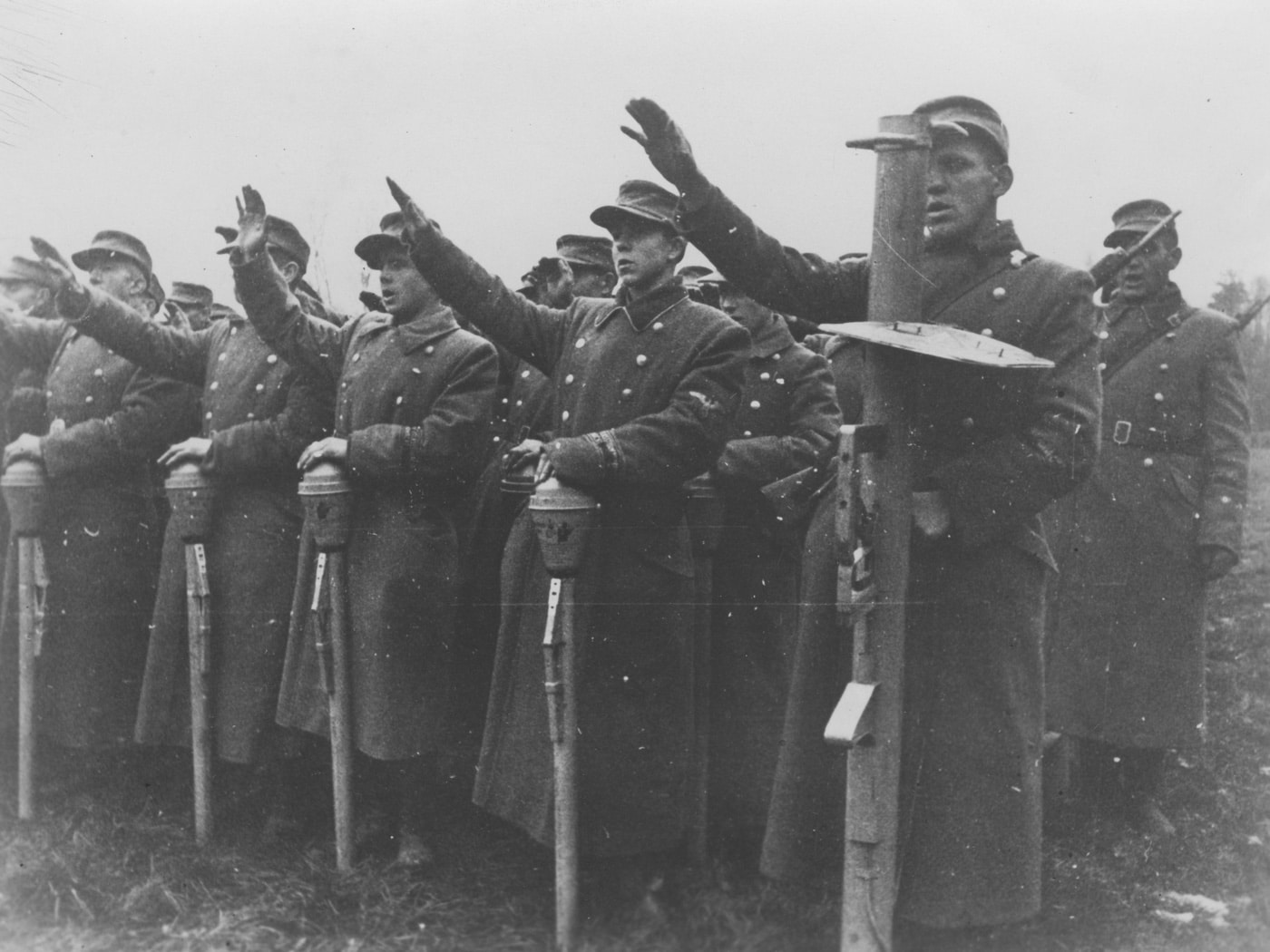
Anti-tank teams were typically arrayed in pairs separated no further than 115 meters apart. These specialized assault troops could be found using the Panzerschreck, the Panzerfaust, or some combination. Ideally, these teams would engage Allied tanks simultaneously at ranges of no more than 69 meters. Gunners were trained to aim for the thinner side or rear armor whenever possible.
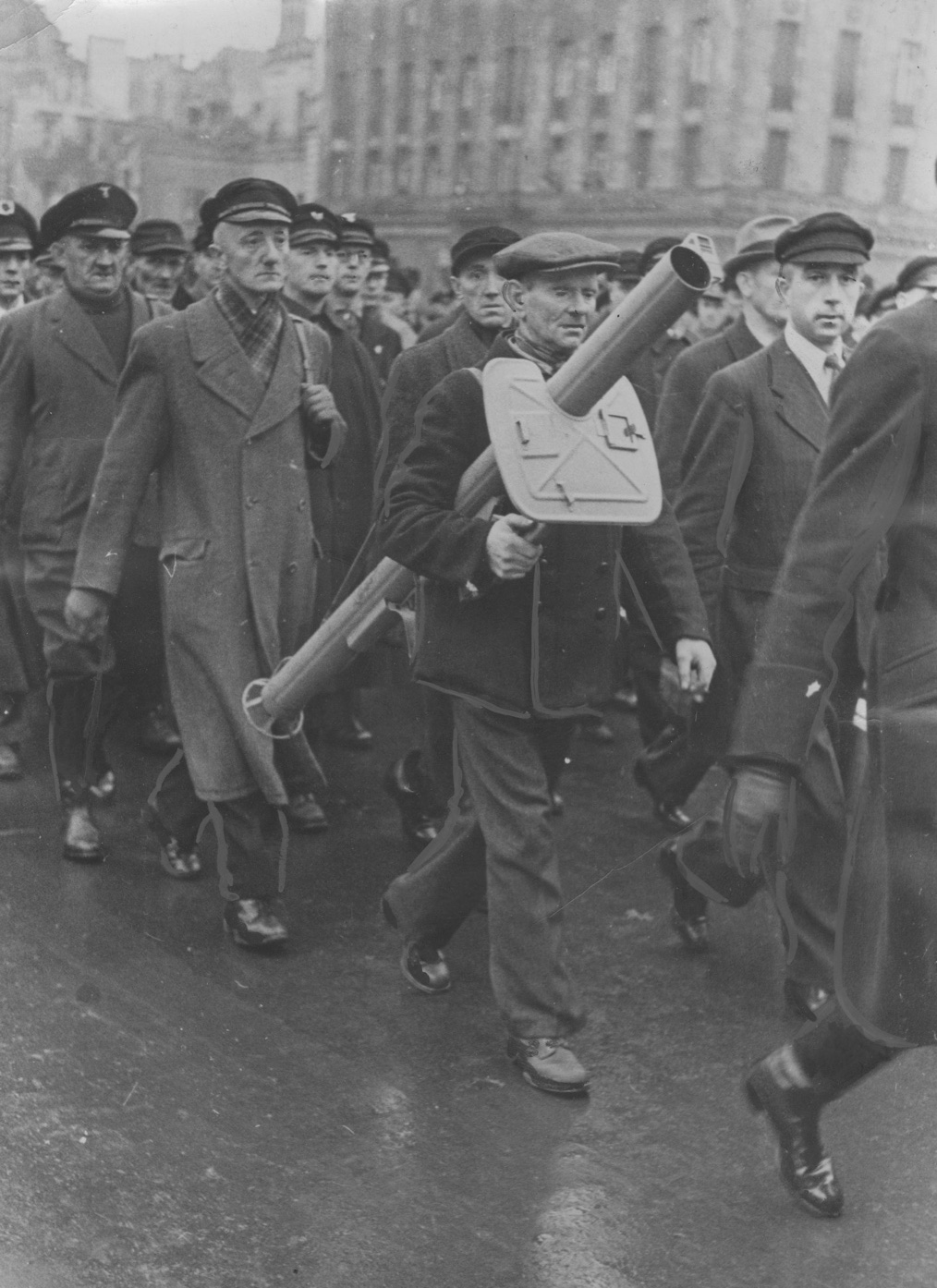
A shaped charge warhead like that of the Panzerschreck requires a certain predetermined standoff distance to be effective. The warhead behaves like an explosive lens to focus the force of the blast onto a single concentrated point. As a result, Allied tankers frequently added logs, concrete, or spare track units to help keep these shaped charge HEAT (high explosive anti-tank) rounds away from the armor. In practical tests, it was determined that to be effective this standoff distance had to be at least one meter, so none of this stuff actually worked very well.
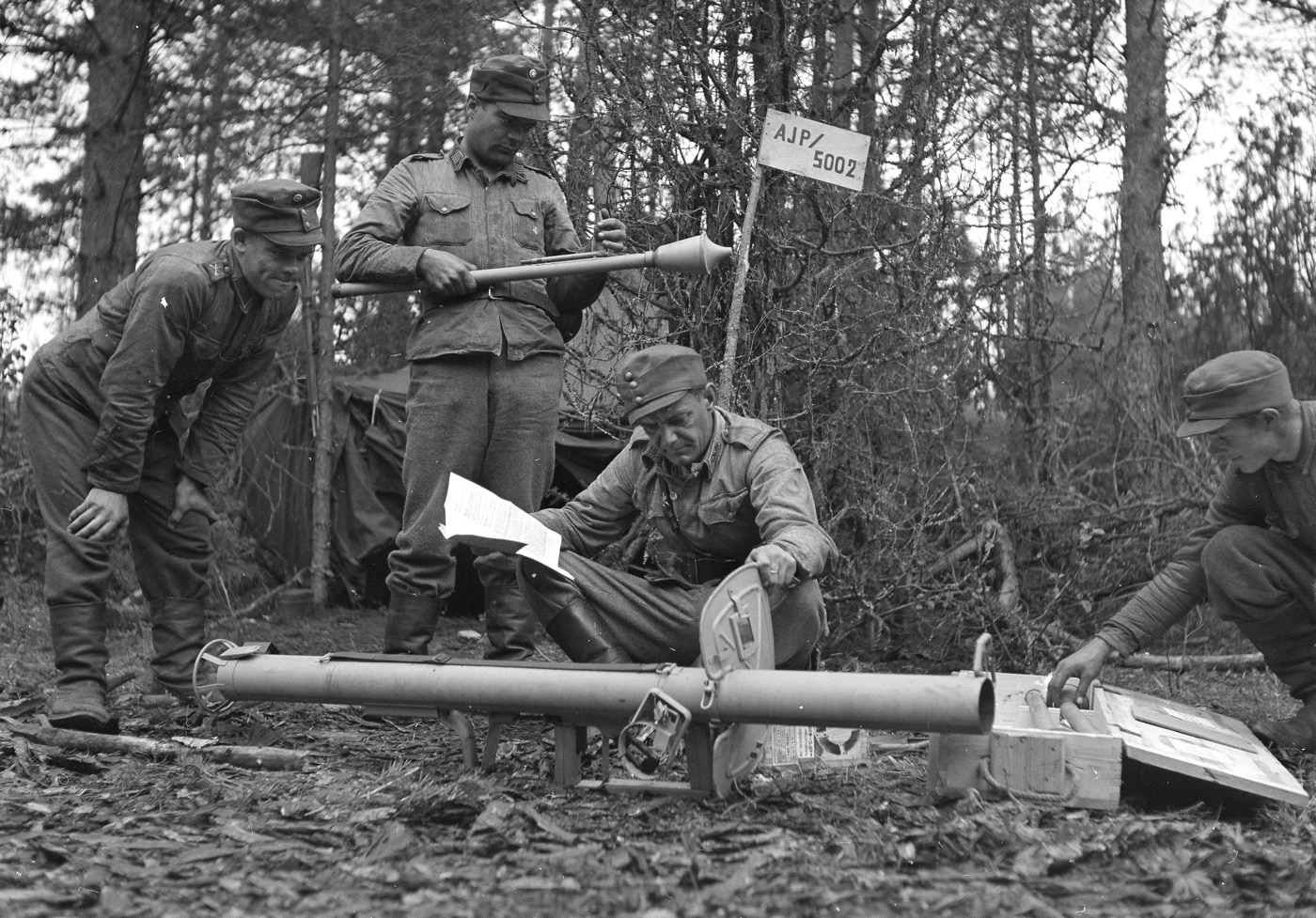
The Panzerschreck produced an immense volume of white smoke upon firing. German troops referred to the weapon as the Ofenrohr or “stovepipe” as a result. For this reason, tank-killing teams had to move frequently on the battlefield, and the RPzB 54 could not be fired from within structures.
Ruminations
When compared to modern weapons, the Panzerschreck was unduly heavy, cumbersome, and inaccurate. However, by the standards of the day it was revolutionary. The RPzB 54 and similar weapons gave the individual Landser the capability to destroy armored vehicles singlehandedly, something that previously had remained the sole purview of tanks and artillery. As such, the Panzerschreck shaped the sorts of man-portable anti-tank weapons that would be used for decades to come.
Editor’s Note: Please be sure to check out The Armory Life Forum, where you can comment about our daily articles, as well as just talk guns and gear. Click the “Go To Forum Thread” link below to jump in and discuss this article and much more!
Join the Discussion
Continue Reading
Did you enjoy this article?

 106
106






